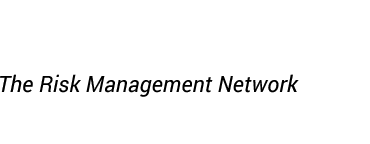The financial crisis of 2007 has shown that regulators must not only look to idiosyncratic, but also systemic bank risk. In order to measure the latter, multiple approaches, such as CoVaR [Adrian & Brunnermeier 2016] and SRISK [Brownlees & Engle 2016] have been postulated. Especially SRISK is often applied, due to its ease of interpreting. Simply said, it measures a shortfall between Equity and Liabilities, which occurs because of a financial crisis, and weights this gap with the capital requirement (k). Raising additional equity would be an easy solution to fill this funding gap. However, equity is often costly and may not be available when needed. Thus, contingent convertible bonds (CoCo-bonds) present a possibly cheaper alternative. By law, CoCo-bonds are debt instruments, which the issuing bank can either convert to common equity tier 1 (CET1), or write down the nominal amount to ease its debt levels. Subject to other contractual designs, these CoCo-bonds are either recognized as equity or debt on the balance sheet. As can be seen in Equation 01, this characteristic can be problematic in the context of SRISK.
Equation 01: SRISKi,t = k∙ Debti,t - (1-k)∙ Equityi,t∙(1-(Lossti,t) |Financial Crisis))
The measure builds on the intuitive assumption that additional loss absorbing capital ceteris paribus reduces systemic risk. However, this reality is only being accounted for, when the CoCo-bond is issued as equity. In the case of debt, the opposite effect can be expected from Equation 01. In spite of issuing additional going concern capital, higher systemic risk has to be anticipated. This disparity entails profound consequences. In detail, the regulator overestimates the systemic risk of banks that have issued CoCo-bonds, which they recognize as debt on their balance sheet. In a worst case, this characteristic may even lead to bank resolution, due to a biased perception of riskiness in the regulator's eye. A trivial solution to this problem would be limiting the contractual freedom of banks, such that CoCo-bonds can only be accounted for as equity. However, we believe that limiting options should in no case be the first best solution. Instead, we suggest an adjustment to the SRISK formula, which addresses the described problem, while not limiting banks' contractual freedom.
Empirical Evidence on CoCo-bonds
The usage of hybrid capital in general, and CoCo-bonds in particular has seen stellar growth since the 2007 financial crisis. Using a sample of 533 CoCo-bonds from 126 banks around the globe, we empirically investigate in our study [Kund & Petras 2019], how the issuance of CoCo-bonds influences the systemic risk of banks. We initially show the relevance of this problem in Table 01. As can be seen, four out of ten CoCo-bonds that are eligible as additional tier 1 (AT1) capital are accounted for as debt. In the instance of tier 2 (T2) capital, the entirety of observation in our sample will be represented as debt on the balance sheet. In summary, two thirds of all issued CoCo-bonds are accounted for as debt, such that they are susceptible to the problem we describe and intend to solve.
AT1 | T2 | Percentage | |
Debt | 107 | 258 | 68,48% |
Equity | 168 | 0 | 31,52% |
Percentage | 51,59% | 48,41% | 100,00% |
Table 01: Accounting of CoCo-bonds by Capital Tier (Kund & Petras 2019)
Our empirical results show that CoCo-bonds, which are accounted for as equity do reduce systemic risk, as expected. Despite providing additional loss absorbing capital, CoCo-bonds accounted for as debt do not reduce systemic risk. Due to this problem, the regulator might wrongfully perceive banks with such CoCo-bonds as riskier than they actually are. We thus propose to adjust the calculation of SRISK to address this undue disparity through a theoretical conversion of the CoCo-bond that occurs immediately at issuance. By doing so, the additional loss absorbing capacity is recognized with the correct amount, such that no disadvantage would stem from issuing CoCo-bonds, which are accounted for as debt.
Implications
Banks should be aware of the consequences of the balance sheet treatment and have several options to deal with the implied distortions. A first alternative would be to eliminate the usage of debt CoCo-bonds. However, doing so implies that these bonds would have to be structured in such ways that they fulfil the requirements to be recognized as equity. We believe that limiting contractual freedom, as required by this solution is not desirable. Hence, we suggest an adjustment to the SRISK formula, which solves this distortion, without decreasing the ease of interpretability of the SRISK measure.
Conclusions
CoCo-bonds contribute additional loss absorbing capacity in times of crisis. However, the SRISK formula fails to account for this characteristic in the context of systemic risk, and hence yields a biased perception of systemic risk for banks with debt CoCo-bonds. We show empirically that this distortion in SRISK is solely based on the accounting treatment. CoCo-bonds that are accounted for as equity reduce SRISK. Those accounted for as debt, however, do not. In the latter case, the systemic risk is overestimated. We also show that if the SRISK formula is adequately adjusted, CoCo-bonds reduce SRISK regardless of their accounting treatment. CoCo-bonds thus strengthen the stability of the banking system, by lowering the systemic risk. This characteristic makes the usage of CoCo-bonds a reasonable alternative to CET1 capital. However, banks must be aware of the consequences of the accounting treatment of CoCo-bonds. Distortions that stem from accounting codes should be openly communicated to bank regulatory authorities in order to prevent regulatory action, which is based on misleading information about the loss absorbing capacity.
Literature:
- Adrian, T./ Brunnermeier, M. K. [2016]: CoVaR. American Economic Review, 106 (7), 1705-1741.
- Brownlees, C./Engle, R. F. [2016]. SRISK: A Conditional Capital Shortfall Measure of Systemic Risk. The Review of Financial Studies, 30 (1), 48-79.
- Kund, A-G./Petras, M. [2019]: Can CoCo-Bonds Mitigate Systemic Risk? Available at SSRN 3455924.
Authors
Arndt-Gerrit Kund, M.Sc., Research Assistant, Department of Banking, University of Cologne
Matthias Petras, M.Sc., Research Assistant, Department of Banking, University of Cologne




